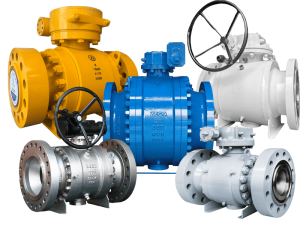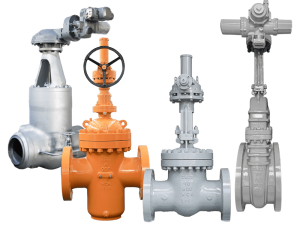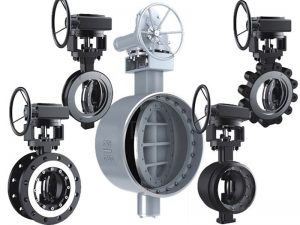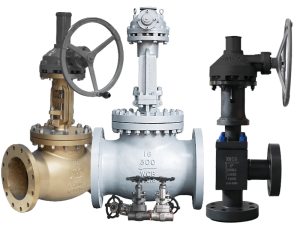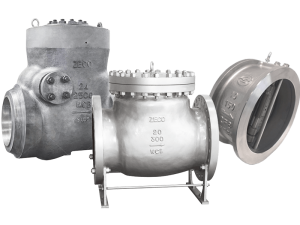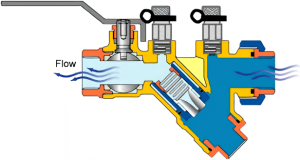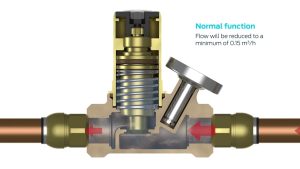Wenn es um die Steuerung des Flüssigkeitsstroms in industriellen Rohrleitungssystemen geht, sind nur wenige Ausrüstungsgegenstände so wichtig wie Ventile. Aber mit Erdball-Klappen und Kugelhähne Woher wissen Sie, welcher Ventiltyp für Ihre spezielle Anwendung am besten geeignet ist?
In diesem umfassenden Leitfaden vergleichen wir die wichtigsten Unterschiede zwischen diesen beiden unverzichtbaren Durchflussregelgeräten. Wir gehen auf ihre Funktionsweise, ihre Vor- und Nachteile, typische Anwendungen und alles andere ein, was Sie brauchen, um zu entscheiden, ob ein Durchgangsventil oder ein Kugelhahn für Ihr System sinnvoller ist.
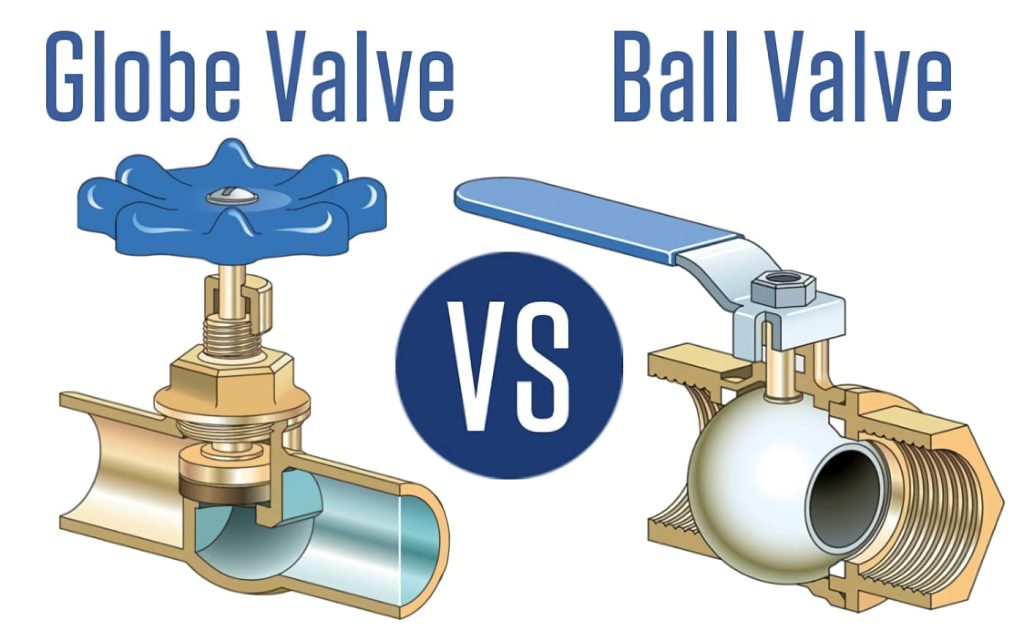
Wie ein Durchgangsventil funktioniert
Ein Durchgangsventil verwendet eine bewegliche Scheibe oder einen Kegel, der an einer Gewindespindel befestigt ist, um den Flüssigkeitsdurchfluss zu regulieren. Wenn Sie das Handrad oben drehen, senkt sich der Kegel auf den Sitz und drosselt den Durchfluss mehr und mehr, bis er vollständig geschlossen ist.
Da der Ventilteller parallel zur Strömungsrichtung sitzt, ermöglichen Durchgangsventile eine präzise Drosselung. Man erhält eine schöne lineare Durchflussrate - je weiter man den Teller vom Sitz abhebt, desto größer ist das Volumen, das durch das Ventilgehäuse fließt.
Dadurch eignet sich ein Durchgangsventil perfekt für Anwendungen wie die Durchflussregelung in einem Kessel oder die genaue Steuerung der Durchflussmenge in einem Gerät.
Durchgangsventile verursachen einen relativ hohen Druckabfall, da die Flüssigkeit ihre Richtung ändern muss, um sie zu durchströmen. Außerdem ist das Gehäuse größer als bei anderen Ventiltypen. Diese kleinen Nachteile werden jedoch durch eine höhere Drosselgenauigkeit wettgemacht.
Vorteile des Geradsitzventils
Es gibt eine Reihe von Vorteilen, die Durchgangsventile zu einem Grundnahrungsmittel für industrielle Rohrleitungssysteme machen:
- Präzise Drosselungsmöglichkeit - Ermöglicht genaue Durchflusskontrolle durch Anheben/Absenken des Stopfens.
- Zuverlässiger leckfreier Verschluss - Dichtes Zusammenfügen von Kegel und Sitz verhindert interne Leckage.
- Geeignet für Hochdruckanwendungen - Bis zu Hunderte von PSI je nach Material und Konstruktion.
- Vielfältige Konfigurationen - T-, Winkel- und Sternmuster ermöglichen Flexibilität.
- Bidirektionales Strömungspotenzial - Einige Durchgangsventile erlauben den Durchfluss in beide Richtungen.
Aufgrund dieser Vorteile eignen sich Durchgangsventile gut für Anwendungen wie Kessel, Wärmetauscher, Chemieanlagen, Prozessleitungen und andere industrielle Anwendungen, die eine genaue Durchflussregelung erfordern.
Wie ein Kugelhahn funktioniert
Anstelle eines aufsteigenden Kegels verwendet ein Kugelventil eine aufgebohrte Kugel, die sich im Ventilgehäuse um ihre Achse dreht, um den Durchfluss zu regulieren. Wenn der Hebel parallel zum Rohr steht, liegt die Bohrung in einer Linie mit dem Durchfluss und das Ventil ist geöffnet. Bei einem Winkel von 90 Grad ist der Durchfluss blockiert.
Kugelhähne arbeiten fast exponentiell - der Durchfluss nimmt drastisch zu, sobald der kleinste Teil der Bohrung freigegeben wird. Sie lassen sich zwar schnell und einfach ein- und ausschalten, ermöglichen aber nicht die feine Drosselung, die ein Durchgangsventil bietet.
Das kompakte Gehäuse hat einen sehr geringen Druckabfall, da nichts den Durchfluss behindert, wenn es vollständig geöffnet ist. Für relativ niedrige Kosten erhalten Sie auch eine außergewöhnliche Lebensdauer und die Fähigkeit, hohe Temperaturen zu bewältigen.
Wann wird ein Kugelhahn verwendet?
Es gibt bestimmte Anwendungen, bei denen ein Kugelhahn besonders gut funktioniert:
- Häufiges An- und Ausschalten - Der 90-Grad-Betrieb ermöglicht einen schnellen Wechsel.
- Niedriger Druckabfall erforderlich - Ungehinderter gerader Durchfluss in geöffnetem Zustand.
- Chemisch aggressive Flüssigkeiten - Kann mit exotischen Legierungen spezifiziert werden.
- Anwendungen bei hohen Temperaturen - Mit den richtigen Materialien sind sie für Hunderte von Grad ausgelegt.
- Schnelle Isolierung erforderlich - Die schnelle 1/4-Drehung stoppt den Durchfluss sofort.
Daher eignen sich Kugelhähne gut für Anwendungen wie Dampfsysteme, chemische Anlagen, Luftleitungen, Tankentleerungen und andere Auf/Zu-Anwendungen.
Vergleich Durchgangsventil vs. Kugelhahn
Nachdem Sie nun die Grundlagen ihrer Funktionsweise kennen, wollen wir uns einige spezifische Vergleichsbereiche zwischen Durchgangs- und Kugelhähnen genauer ansehen:
Fähigkeit zur Drosselung
Da Durchgangsventile durch Anheben und Absenken eines Kegels funktionieren, ermöglichen sie eine hervorragende Drosselspanne von 100% offen bis fast geschlossen. Kugelhähne können aufgrund ihrer exponentiellen Durchflusscharakteristik nicht die gleiche Genauigkeit bieten.
Gewinner: Durchgangsventil
Druckabfall
Der geradlinige Durchfluss eines offenen Kugelhahns führt zu sehr geringen Verlusten. Durchgangsventile erfordern eine Richtungsänderung der Flüssigkeit und haben daher höhere Verluste.
Gewinner: Kugelhahn
Kosten
Kugelhähne sind dank ihrer einfachen, kompakten Komponenten in der Regel preiswerter als vergleichbar große Durchgangsventile.
Gewinner: Kugelhahn
Zuverlässigkeit und Langlebigkeit
Die Einfachheit eines Kugelhahns steht im Allgemeinen für eine außergewöhnliche Lebensdauer bei geringem Wartungsaufwand. Komplexere Ventileinbauten können gelegentliche Arbeiten erfordern.
Gewinner: Kugelhahn
Größe
Kompakte Kugelhahnkonstruktionen benötigen weit weniger Platz als sperrige Kugelhahngehäuse.
Gewinner: Kugelhahn
Bidirektional vs. Unidirektional
Viele Durchgangsventile können nur in eine Richtung fließen. Kugelhähne können problemlos in zwei Richtungen fließen.
Gewinner: Kugelhahn
Vergleichsbereiche zwischen Durchgangs- und Kugelhähnen
- Drosselungsfähigkeit
- Druckverlust
- Kosten
- Verlässlichkeit und Langlebigkeit
- Größe/Platzbedarf
- Bidirektionaler vs. unidirektionaler Fluss
Wenn Sie alle Faktoren abwägen, Erdball-Klappen sind die beste Wahl, wenn eine genaue Durchflussregelung erforderlich ist, da ihre Drosselgenauigkeit durch nichts übertroffen werden kann.
Kugelhähne Hervorragend geeignet, wenn ein wirtschaftliches Auf/Zu-Ventil benötigt wird, dank schneller Schaltzeiten, geringem Druckabfall und kompaktem Formfaktor.
Typische Anwendungen von Geradsitzventilen
Dank ihrer präzisen Drosselungsmöglichkeiten werden Durchgangsventile häufig in Anwendungen wie diesen eingesetzt:
- Heißwasser- oder Dampfkessel - Genaue Anpassung der Kesselfeuerungsrate an die Last.
- Kaltwassersätze - Modulieren Sie den Kältemittelfluss, um die Kühlleistung zu optimieren.
- Chemische Einspritzsysteme - Kontrolle der Zusatzstoffmenge.
- Prozesse des eichpflichtigen Verkehrs - Sicherstellung einer genauen Durchflussmessung.
- Hochdruck-Flüssigkeitstransport - Zuverlässige Absperrung und geringe Leckage.
Typische Kugelhahnanwendungen
Mit ihrem schnellen Auf/Zu-Betrieb, ihrer außergewöhnlichen Lebensdauer und ihrem geringen Druckabfall eignen sich Kugelhähne hervorragend für diese Art von Anlagen:
- Dampfbegleitheizungen - Schnelles Unterbrechen des Durchflusses ohne Wasserschlag.
- Chemieanlagen - Wirtschaftliche, langlebige Ventile auch mit exotischen Legierungen.
- Batch-Verarbeitung - Schnelles Umschalten der Ströme von Tank zu Tank.
- Luftsysteme - Schnelle, zuverlässige Isolierung von Abzweigungen und Leitungen.
- Kraftstoffversorgungsleitungen - Bei Bedarf sofortige Sicherheitsabschaltung.
Die Wahl zwischen Durchgangs- und Kugelhahn
Bei der Entscheidung zwischen einem Durchgangs- oder einem Kugelventil für Ihre Anwendung ist der wichtigste Faktor, ob Sie eine genaue Drosselungsfunktion oder nur ein einfaches Auf/Zu-Ventil benötigen.
Wenn es auf eine präzise Durchflussregelung ankommt - wie bei einem Kessel oder Mischbetrieb - ist ein Durchgangsventil bei weitem die beste Wahl.
Für einfache Absperranwendungen ist ein wirtschaftlicher Kugelhahn wahrscheinlich sinnvoller.
Berücksichtigen Sie darüber hinaus auch Druckverluste, Zuverlässigkeitsanforderungen, Betriebstemperaturen, Häufigkeit der Schaltzyklen und Einschränkungen beim Einbauraum.
Das Abwägen all dieser Vergleichsbereiche wird Sie zur richtigen Lösung für die Durchflusskontrolle führen!

